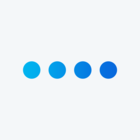Hi,
I have a question concerning using Qualtrics for my experiment. In the experiment I want to compare the results of two questions. The questions are framed in a slightly different way. I would like every respondent to answer the question in a survey and then answer the other version of the question a week later. Preferably it would be randomized who gets which question first, but it is important that they will get the other question 1 week later. Is there a way do this?




